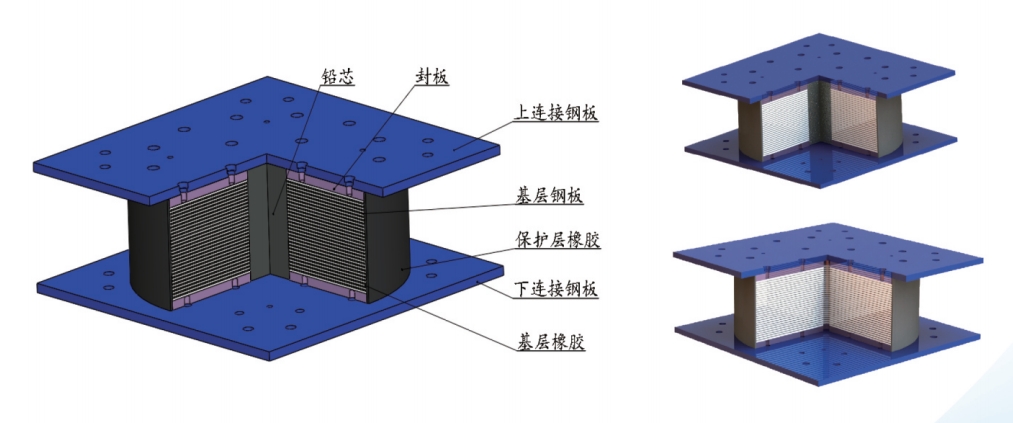
1. Overview
The isolation rubber bearing is composed of multiple layers of rubber and multiple layers of steel plates or other materials that alternate and overlap. According to the requirements of different buildings and bridges, isolation rubber bearings can have different layered structures, manufacturing processes, and formula designs to meet the required performance requirements such as vertical stiffness, lateral deformation, damping durability, etc.
2. Scope of application
The application scope of basic isolation technology is very wide. For important buildings and lifeline projects, the use of isolation technology improves the seismic resistance of the structure. In the event of an earthquake disaster, it can effectively play its "lifeline" function (such as hospitals and fire command centers), ensuring its normal operation; Using isolation technology in workshops and warehouses for storing valuable equipment, instruments, and products can prevent damage to the equipment and products; Used for bridges to prevent traffic interruption caused by earthquake disasters; Used in museums, it can protect priceless treasures from earthquakes; Used in nuclear power plants to prevent nuclear leaks caused by earthquakes; Used for the reinforcement and restoration of ancient buildings with historical value, it can more effectively maintain the original style of the building.
3. Types
Isolation rubber bearings can be classified into three types based on their material composition: natural rubber bearings (lead-free GZP/LNR), lead core rubber bearings (with lead GZY/LRB), and high damping rubber bearings (HDR).
① Natural rubber bearings (lead-free GZP/LNR) are mainly made of natural rubber as the main raw material;
(2) Lead core rubber bearings (with lead type GZY/LRB) are added to the rubber bearing structure to improve the damping ratio of the isolation bearings; ③ High damping rubber bearings (HDR) are made of specially formulated high damping rubber that provides a larger damping ratio to the rubber itself.
4. Structure of isolation rubber bearings
